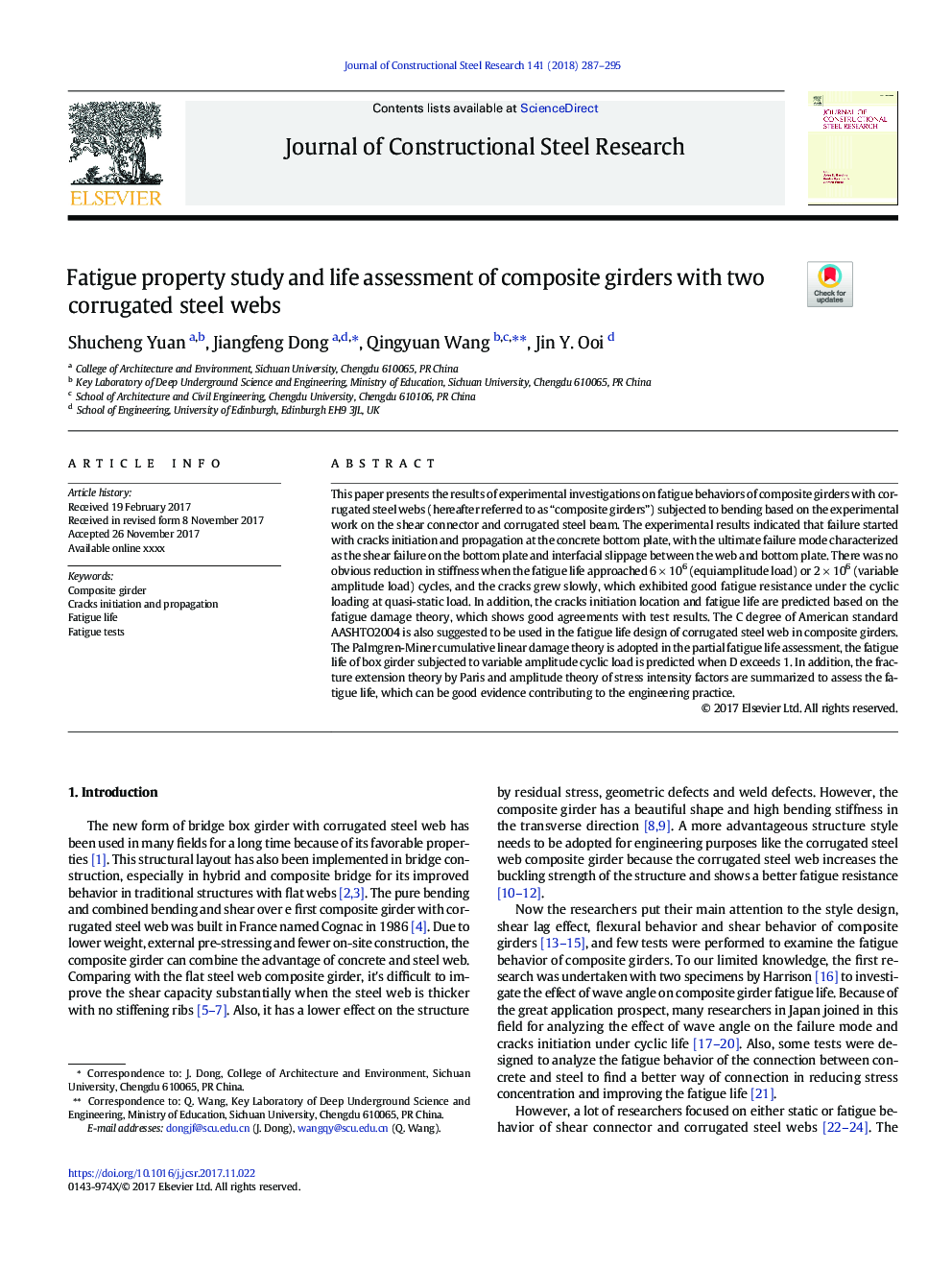| Article ID | Journal | Published Year | Pages | File Type |
|---|---|---|---|---|
| 6751184 | Journal of Constructional Steel Research | 2018 | 9 Pages |
Abstract
This paper presents the results of experimental investigations on fatigue behaviors of composite girders with corrugated steel webs (hereafter referred to as “composite girders”) subjected to bending based on the experimental work on the shear connector and corrugated steel beam. The experimental results indicated that failure started with cracks initiation and propagation at the concrete bottom plate, with the ultimate failure mode characterized as the shear failure on the bottom plate and interfacial slippage between the web and bottom plate. There was no obvious reduction in stiffness when the fatigue life approached 6Â ÃÂ 106 (equiamplitude load) or 2Â ÃÂ 106 (variable amplitude load) cycles, and the cracks grew slowly, which exhibited good fatigue resistance under the cyclic loading at quasi-static load. In addition, the cracks initiation location and fatigue life are predicted based on the fatigue damage theory, which shows good agreements with test results. The C degree of American standard AASHTO2004 is also suggested to be used in the fatigue life design of corrugated steel web in composite girders. The Palmgren-Miner cumulative linear damage theory is adopted in the partial fatigue life assessment, the fatigue life of box girder subjected to variable amplitude cyclic load is predicted when D exceeds 1. In addition, the fracture extension theory by Paris and amplitude theory of stress intensity factors are summarized to assess the fatigue life, which can be good evidence contributing to the engineering practice.
Related Topics
Physical Sciences and Engineering
Engineering
Civil and Structural Engineering
Authors
Shucheng Yuan, Jiangfeng Dong, Qingyuan Wang, Jin Y. Ooi,
